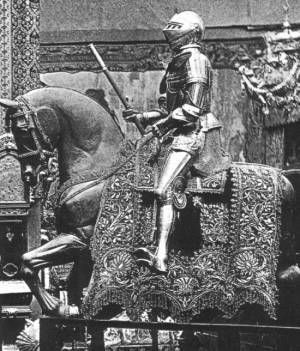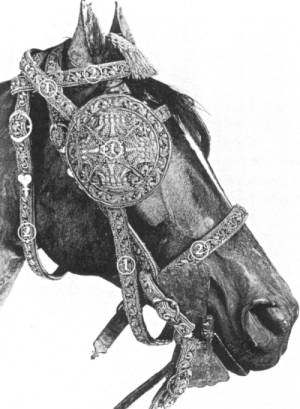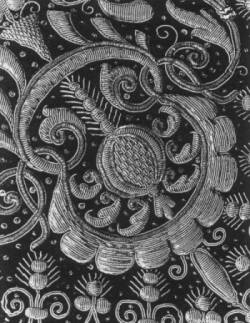saddle cloths, saddle and harness, blinders, stirrups, pistol holsters, straps, etc.
The textiles are from red
velvet and with gold embroidery. Only electors were
allowed to use velvet, silk, silver and gold for their
own horses, and these items were kept together with
tapestries and other precious textiles. Today they are
preserved in the castel of Nymphenburg near Munich.
Most of the embroidery was executed in Milano
(Italy). The design had been made by the court painter Wilhelm
Schoepfer (he died in 1634) from Munich.
The merchant Andreas Fasser (died 7
January 1641) dealt with fabrics, with gold and silver
yarns. He had good connections to Milano and also close
relations to the silk embroiderer's craft. He must have
arranged the execution of this masterpiece of art.

"Kredenzdecke", photo from 1876


